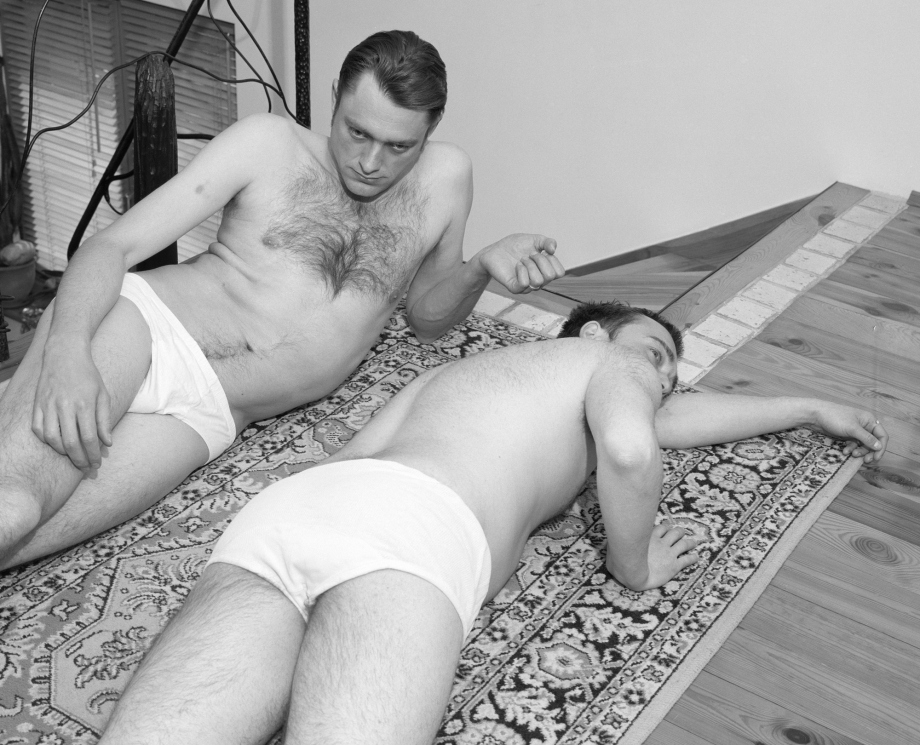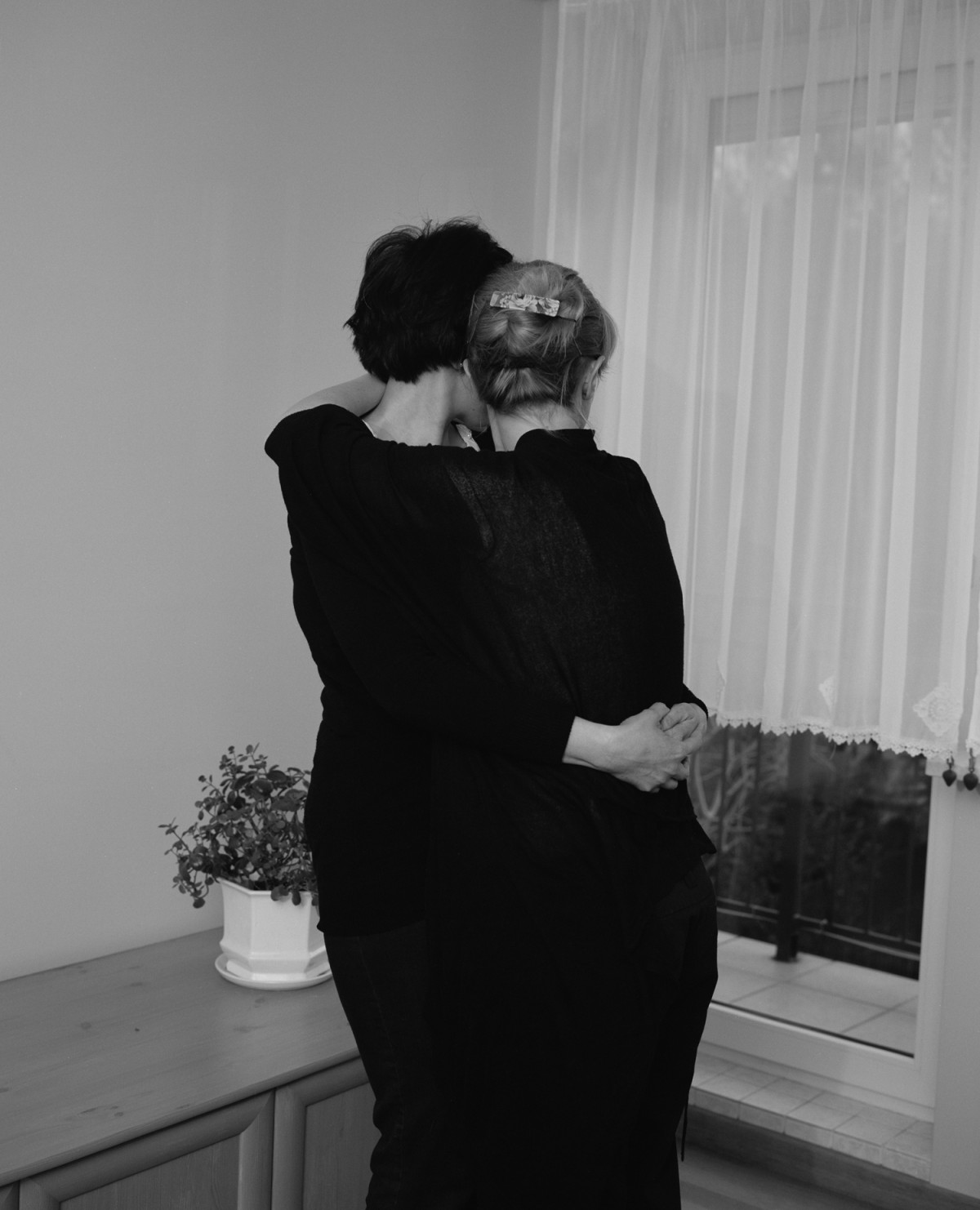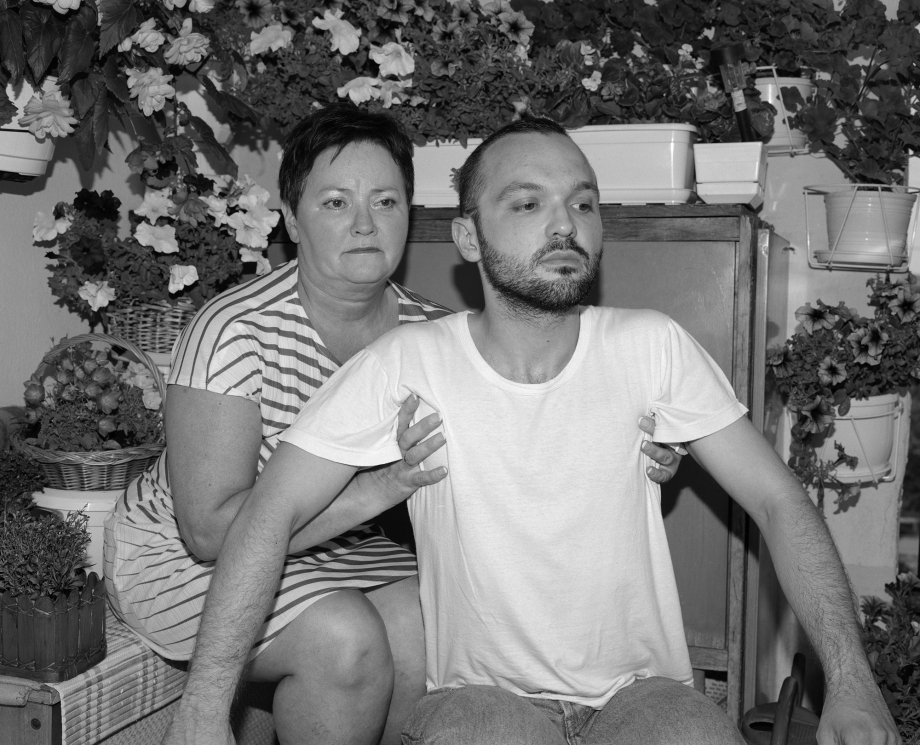Anca Rujoiu reflects on three photographs from Joanna Piotrowska's project FROWST.
We were sitting down, next to each other on the old carpet and lapsed into silence for awhile
I
What does a picture tell? What does it reveal, what does it disclose? For W. J. T. Mitchell pictures are not only vehicles of meaning and instruments of power, but expressions of desire. He shifts the focus from what pictures mean or what they do to what they want. The expression of want is not always visible or in correspondence with what is depicted. It might manifest itself through lack, through what it is left out and remains concealed. And what is not shown in the picture instigates our desire to see.
IX
Family albums might be our first contact with photographs. We grow up browsing through family pictures; they complement, construct or complicate our distant memories. Much of what constitutes family life, such albums will exclude. Rarely will one find any record of distressful moments, emotional torments or banalities of everyday life. With a focus on celebrations, the album will leave out anything that will undermine the representation of an ideal family. Those rejected moments found their way in many artists’ works, contesting embedded projections and investigating more deeply the intricacies of the family world.
It might be rare to find in an album, for instance, a very intimate moment between two women – two sisters who cling to each other into a tight, sensual embracement. The photograph brings something from a Bergman film, it is situated on the verge of a dysfunctional moment. We could expect at any time a brutal eruption of feelings that will disrupt the temporary state of calmness and will perpetuate unresolved feelings. The softness of this moment is attenuated by the staged nature of the subjects’ gestures and the coldness of the domestic space with its minimalist, perfectly organized environment. The choreography of the photograph reinforces the staged nature of a family picture and its implications. We construct the perception of ourselves through other people’s representations of ourselves and we embody and perform them in future situations. The photograph is purposefully misleading; it produces a photographic fiction; it performs the family ‘scene’.
I
The two men are sitting down on the floor, closely to each other, but not close enough. The space between them embodies desire and tension; it demarcates the outline of their bodies only to produce a mental image of their possible, but suppressed physical contact. The tension between the subjects derives from what the picture deliberately chooses to miss. This is what, Mitchell defines as the ‘impotence’ of the picture where desire, in order to compensate for what the picture lacks, gets even stronger. That space in between is subject to our projections and fantasies, as beholders we complete what is left uncompleted.
The two men seem even further disconnected into a different mental space. Each absorbed into their thoughts, they are looking in opposite directions, yet a silent, invisible stream seems to run across their thoughts and connect them into one single contemplative desire. There is no indication in the photograph itself or its corresponding title that the two young men are brothers. Would this information add anything to the picture? Would it make our reading of it feel slightly perverted? Joanna Piotrowska’s FROWST series is infused with ambiguities. On one side, it is the ambiguity of the picture that reveals itself only partially. On the other side, the physical proximity between the two brothers is itself confusing, oscillating between affection and erotic tension. The whole series hints to the ambivalent nature of our family relations where physical gestures of affection or closeness can gradually be perceived over the years as inappropriate and uncomfortable.
II
FROWST captures the paradoxical nature of a home. Warm and cozy, a frowsty space can also feel airless and uncomfortable. The space of intimacy is often suffocating, but its comfortable security might trap us inside longer than we wish. It allows us to manifest our vulnerabilities and weaknesses under the safe roof of domestic convenience.
II
Gently lifted by his mother, the son, now a young adult performs as if abandoning his body in an act of deliberate indifference. The postures are slightly awkward and forced. The theatrical choreography of gestures carries the struggle of restaging an intimate moment between mother and son that in the past was natural and intuitive. Although the physical contact between them is now recreated, the power relations seem unchanged. It is in this restaging of the real that the emotional entanglement comes back to surface as strong and present as it’s always been.
Published 12 November 2013
Commissioned by Photoworks



